1.
Introduction
Probability theory and other related fields describe stochastic processes as groups of random variables. In verifiable terms, the random variables were correlated or listed by a large number of numbers, usually considered as time foci, providing a translation of stochastic processes into numerical estimation of a system that changes over time, such as bacteria growing and decaying, electrical circuits fluctuating due to thermal noise, or gas molecules forming. A stochastic process can be a scientific model for systems that appear to change at random. Many applications of these techniques exist in various fields, such as biology, ecology, chemistry, and physics, as well as engineering and technology fields, such as picture preparing, data theory, computer science, signal processing, telecommunications, and cryptography.
Moore's book prompted a systematic investigation into interval arithmetic in different countries after its appearance. Although he dealt with a whole bunch of general ideas for intervals, he mainly focused on bounding solutions to various boundary value and initial value problems, see Ref. [1]. In numerical analysis, compact intervals have played an increasingly important role in verifying or enclosing solutions to a variety of mathematical problems or demonstrating that such problems cannot be solved within a given domain over the past three decades. In order to accomplish this, intervals need to be regarded as extensions of real and complex numbers, interval functions need to be introduced and interval arithmetic applied, and appropriate fixed point theorems have to be applied. A thorough and sophisticated computer implementation of these arithmetic concepts combined with partly new concepts such as controlled rounding, variable precision, and epsilon inflation resulted in the theory being useful in practice, and the computer was able to automatically verify and enclose solutions in many fields. For some recent developments in variety of other practical fields, see Refs. [2,3,4]
Mathematics is always captivating and fascinating to study when it comes to convex functions. Mathematicians work hard to find and explore a large array of results with fruitful applications. Mathematicians as well as people from physics, economics, data mining, and signal processing have been studying convex functions for years. In the optimization of stochastic processes, especially in numerical approximations when there are probabilistic quantities, convexity is of utmost importance. The convex stochastic processes were defined by Nikodem in 1980, along with some properties known from classical convex functions, see Ref. [5]. The Jensen convex mapping plays a very important role in the inequalities theory. Several well known inequalities are derived from this and this was further utilized by Skowronski in stochastic sense in 1992, see Ref. [6]. Using these notions, Kotrys showed how integral operators can be used to calculate the lower and upper bounds for the Hermite-Hadamard inequality for convex stochastic processes, as well as properties of convex and Jensen-convex processes, see Ref. [7]. Many studies on various types of convexity for stochastic processes have been published in the literature in recent years. Okur et al. [8] developed (H.H) inequality for stochastic p-convexity. Erhan constructs these inequalities using the stochastic s-convex concept, see Ref. [9]. Budak et al. [10] extends the results of the following authors [11] by using the concept of h-convexity to present inequalities in a more generalised form. Check out some recent developments in the stochastic process using a variety of other classes, see Refs. [12,13,14,15,16,17,18,19,20,21]. Tunc created the Ostrowski type inequality for the h-convex function, see Ref. [22]. Later authors extended the results for the Ostrowski inequality and converted them to a stochastic process, see Ref. [23]. We know that Zhao et al. [24] recently connected the term inequalities to interval calculus, and they present the inequalities in this form. Gaining inspiration from this by the end of 2022 Afzal et al. [25] introduces the concept of stochastic processes in relation to interval analysis, as well as the (H.H) and Jensen versions of stochastic processes developed. Eliecer and his co-author developed (m,h1,h2)-G-convex stochastic process and represent the following inequalities, see Ref. [26]. Cortez utilized the concept of fractional operator and developed inequalities using (m,h1,h2)-convex stochastic process, see Ref. [27]. There have been some recent developments related to convex stochastic processes and convexity with the use of IVFS, see Refs. [28,29,30,31,32,33,34,35,36,37,38,39,40,41,42,43,44,45,46,47,48,49,50,51,52].
The stochastic process has been used in various fields related to mathematics and statistics in recent years, and their connection with interval analysis contributes greatly to the accuracy of desired results. Authors have used the stochastic process as a means of analyzing convex analysis and its related integral and variational inequalities over the past years, but the present results are considered novel because the integration of integral inequalities with interval analysis is very new with stochastic processes. They were constructed because we know inequalities play an essential role in ensuring the regularity, stability, and uniqueness of many interval stochastic differential equations, which was not possible with ordinary stochastic inequalities. Using interval analysis, we were able to explore a whole new dimension of inequalities. Some recent advances in interval stochastic processes can be found in the following disciplines, see Refs. [53,54,55].
Strong literature and specific articles, [10,22,23,24,25,27,51] served as our inspiration as we introduced the concept of the (h1,h2)-convex stochastic process and developed Hermite-Hadamard, Ostrowski and Jensen type inclusions. In addition, we provide some numerically non-trivial examples to demonstrate the validity of the main results. The article is organised as follows: After reviewing the necessary and pertinent information regarding interval-valued analysis in Section 2, we give some introduction related to Stochastic process under Section 3. In Section 4, we discuss our main results. Section 5 explores a brief conclusion.
2.
Preliminaries
This paper employs concepts that are not defined here but are used, see Ref. [25]. There is an interval J that is closed and bounded, and it is defined by the relation given below:
These J_,¯J∈R are the endpoints of interval J. When J_=¯J, then the interval J is called to be degenerated. When J_>0 or ¯J<0, we say that it is positive or negative respectively. Therefore, we are talking about the collection of all intervals in R by RI and positive intervals by RI+. The widely used Hausdorff separation of the intervals J and K is defined as:
It's obvious that (RI,D) is complete metric space. The definitions of the fundamental interval arithmetic operations are provided below for J and K:
The interval J can be multiplied scalarly by
By clarifying how operations are defined on, its algebraic characteristics that make it quasilinear can be explained on RI. They fit into the following categories.
● (Associative w.r.t addition) (J+K)+ϱ=J+(K+ϱ) ∀ J,K,ϱ∈RI
● (Commutative w.r.t addition) J+ϱ=ϱ+J ∀ J,ϱ∈RI,
● (Additive element) J+0=0+J ∀ J∈RI,
● (Law of Cancellation) ϱ+J=ϱ+ϱ⇒J=ϱ ∀ J,ϱ,ϱ∈RI,
● (Associative w.r.t multiplication) (J⋅ϱ)⋅ϱ=J⋅(ϱ⋅ϱ) ∀ J,ϱ,ϱ∈RI,
● (Commutative w.r.t multiplication) J⋅ϱ=ϱ⋅J ∀ J,ϱ∈RI,
● (Unity element) J⋅1=1⋅J ∀ J∈RI.
A set's inclusion ⊆ is another property that is given by
When we combine inclusion and arithmetic operations, we get the following relationship, known as the isotone of intervals for inclusion. Consider ⊙ it will represent the basic arithmetic operations. If J,K,ϱ and ι are intervals, then
This implies that the following relationship is true.
This proposition is concerned with the preservation of inclusion in scalar multiplication.
Proposition 2.1. Let J and K be intervals and ϱ∈R, then ϱJ⊆ϱK.
The ideas presented below serve as the foundation for this section's discussion of the concept of integral for IVFS: A function F is known as IVF at Ja∈[J1,J2], if it gives each a nonempty interval Ja∈[J1,J2]
A partition of any arbitrary subset P of [J1,J2] can be represented as:
The mesh of partition of P is represented by
The pack of all partitions of [J1,J2] can be represented by P([J1,J2]). Let P(Δ,[J1,J2]) be the pack of all P∈P([J1,J2]) with satisfying this mesh(P)<Δ for any arbitrary point in interval, then sum is denoted by:
where F:[J1,J2]→RI. We say that S(F,P,Δ) is a sum of F with reference to P∈P(Δ,[J1,J2]).
Definition 2.1. (See [25]) A function F:[J1,J2]→RI is known as Riemann integrable for IVF or it can be represented by (IR) on [J1,J2], if ∃ γ∈RI such that, for every J2>0 ∃ Δ>0 such that
for each Riemann sum S of F with reference to P∈P(Δ,[J1,J2]) and unrelated to the choice of Jii∈[Ji−1,Ji], ∀ 1≤i≤m. In this scenario, γ is known as (IR)-integral of F on [J1,J2] and is represented by
The pack of all (IR)-integral functions of F on [J1,J2] can be represented by IR([J1,J2]).
Theorem 2.1. (See [25]) Let F:[J1,J2]→RI be an IVF defined as F(Ja)=[F_(Ja),¯F(Ja)]. F∈IR([J1,J2]) iff F_(Ja),¯F(Ja)∈R([J1,J2]) and
where R([J1,J2]) represent the bunch of all R-integrable functions. If F(Ja)⊆G(Ja) for all Ja∈[J1,J2], then this holds
3.
Stochastic process
Definition 3.1. A function F:Δ→R defined on probability space (Δ,A,P) is called to be random variable if it is A-measurable. A function F:I×Δ→R where I⊆R is known as stochastic process if, ∀ J1∈I the function F(J1,⋅) is a random variable.
Properties of stochastic process
A stochastic process F:I×Δ→R is
● Continuous over interval I, if ∀ Jo∈I, one has
where P−lim represent the limit in the space of probabilities.
● Continuity in mean square sense over interval I, if ∀ Jo∈I, one has
where E[F(J1,⋅)] represent the random variable's expected value.
● Differentiability in mean square sense at any arbitrary point J1, if one has random variable F′:I×Δ→R, then this holds
● Mean-square integral over I, if ∀ J1∈I, with E[F(J1,⋅)]<∞. Let [J1,J2]⊆I, J1=bo<b1<b2...<bk=J2 is a partition of [J1,J2]. Let Fn∈[bn−1,bn],∀n=1,...,k. A random variable S:Δ→R is mean square integral of the stochastic process F over interval [J1,J2], if this holds
In that case, it is written as
We can immediately deduce the following implication from the definition of mean-square integral. If only for everyone a∈[J1,J2] the inequality F(a,⋅)≤R(a,⋅) (a.e.) holds, then
Afzal et al. [25] developed following results using interval calculus for stochastic process.
Theorem 3.1. (See [25]) Let h:[0,1]→R+ and h≠0. A function F:I×Δ→R+I is h-Godunova-Levin stochastic process for mean square integrable IVFS. For each J1,J2∈[J1,J2]⊆I, if F∈SGPX(h,[J1,J2],R+I) and F∈ R+I. Almost everywhere, the following inequality is satisfied
Theorem 3.2. (See [25]) Let gi∈R+ with k≥2. If h is non-negative and F:I×Δ→R is non-negative h-Godunova-Levin stochastic process for IVFS almost everywhere the following inclusion valid
Definition 3.2. (See [25]) Let h:[0,1]→R+. Then F:I×Δ→R+ is known as h-convex stochastic process, or that F∈SPX(h,I,R+), if ∀ J1,J2∈I and a∈[0,1], we have
In (3.3), if "≤" is reverse with "≥", then we call it h-concave stochastic process or F∈SPV(h,I,R+).
Definition 3.3. (See [25]) Let h:[0,1]→R+. Then the stochastic process F=[F_,¯F]:I×Δ→R+I where [J1,J2]⊆I is known as h-Godunova-Levin stochastic process for IVFS or that F∈SGPX(h,[J1,J2],R+I), if ∀ J1,J2∈[J1,J2] and a∈[0,1], we have
In (3.4), if "⊇" is reverse with "⊆", then we call it h-Godunova-Levin concave stochastic process for IVFS or F∈SGPV(h,[J1,J2],R+I).
Definition 3.4. (See [25]) Let h:[0,1]→R+. Then the stochastic process F=[F_,¯F]:I×Δ→R+I where [J1,J2]⊆I is known as h-convex stochastic process for IVFS or that F∈SPX(h,[J1,J2],R+I), if ∀ J1,J2∈[J1,J2] and a∈[0,1], we have
In (3.5), if "⊇" is reverse with "⊆", then we call it h-concave stochastic process for IVFS or F∈SPV(h,[J1,J2],R+I).
4.
Hermite-Hadamard type inequality for (h1,h2)-convex stochastic process
Taking inspiration from the preceding literature and definitions, we are now in a position to define a new class of convex stochastic process.
Definition 4.1. Let h1,h2:[0,1]→R+. Then the stochastic process F=[F_,¯F]:I×Δ→R+I where [J1,J2]⊆I is called (h1,h2)-convex stochastic process for IVFS or that F∈SPX((h1,h2),[J1,J2],R+I), if ∀ J1,J2∈[J1,J2] and a∈[0,1], we have
In (4.1), if "⊇" is replaced with "⊆", then it is called (h1,h2)-concave stochastic process for IVFS or F∈SPV((h1,h2),[J1,J2],R+I).
Remark 4.1. (i) If h1=h2=1, subsequently, Definition 4.1 turns into a stochastic process for P-function.
(ii) If h1(a)=1h(a),h2=1, subsequently, Definition 4.1 turns into a stochastic process for h-Godunova-Levin function.
(iii) If h1(a)=a,h2=1, subsequently, Definition 4.1 turns into a stochastic process for general convex function.
(iv) If h1=as,h2=1, subsequently, Definition 4.1 turns into a stochastic process for s-convex function.
Theorem 4.1. Let h1,h2:[0,1]→R+ and H(12,12)≠0. A function F:I×Δ→R+I is (h1,h2)-convex stochastic process as well as mean square integrable for IVFS. For every J1,J2∈[J1,J2]⊆I, if F∈SPX((h1,h2),[J1,J2],R+I) and F∈ R+I. Almost everywhere, the following inclusion is satisfied
where H(a,1−a)=h1(a)h2(1−a).
Proof. Since F∈SPX((h1,h2),[J1,J2],R+I), we have
By Definition 4.1, one has
Integrating one has
Accordingly,
Now, collect (4.3) and (4.4), we achieve the desired outcome.
□
Example 4.1. Consider [J1,J2]=[−1,1],h1(a)=a,h2=1, ∀ a∈ [0,1]. If F:[J1,J2]→RI+ is defined as
Then,
As a result,
This verifies the above theorem.
Theorem 4.2. Let h1,h2:[0,1]→R+ and H(12,12)≠0. A function F:I×Δ→R+I is (h1,h2)-convex stochastic process as well as mean square integrable for IVFS. For every J1,J2∈[J1,J2]⊆I, if F∈SPX((h1,h2),[J1,J2],R+I) and F∈ R+I. Almost everywhere, the following inequality is satisfied
where
Proof. Take [J1,J1+J22], we have
Integrating one has
Accordingly,
Similarly for interval [J1+J22,J2], we have
Adding inclusions (4.6) and (4.7), we get
□
Example 4.2. Recall the Example 4.1, we have
and
Thus, we obtain
This verifies the above theorem.
Theorem 4.3. Suppose h1,h2:(0,1)→R+ such that h1,h2≠0. A mappings F,A:I×Δ→R+I are (h1,h2)-convex stochastic process as well as mean square integrable for IVFS. For every J1,J2∈I, if F∈SPX((h1,h2),[J1,J2],R+I), A∈SPX((h1,h2),[J1,J2],R+I) and F,A∈ IRI. Almost everywhere, the following inclusion is satisfied
Proof. Consider F∈SPX((h1,h2),[J1,J2],R+I), A∈SPX((h1,h2),[J1,J2],R+I) then, we have
Then,
Integrating, one has
Thus, it follows
Theorem is proved.□
Example 4.3. Let [J1,J2]=[0,1],h1(a)=a, h2(a)=1 for all a∈ (0,1). If F,A:[J1,J2]⊆I→RI+ are defined as
Then, we have
and
Since
Consequently, Theorem 4.3 is verified.
Theorem 4.4. Suppose h1,h2:(0,1)→R+ such that h1,h2≠0. A mappings F,A:I×Δ→R+I are (h1,h2)-convex stochastic process as well as mean square integrable for IVFS. For every J1,J2∈I, if F∈SPX((h1,h2),[J1,J2],R+I), A∈SPX((h1,h2),[J1,J2],R+I) and F,A∈ IRI. Almost everywhere, the following inequality is satisfied
Proof. Since F,A∈SPX((h1,h2),[J1,J2],R+I), one has
Accordingly, the above theorem can be proved. □
Example 4.4. Recall the Example 4.3, we have
and
This implies
This verifies the above theorem.
4.1. Ostrowski type inequality for (h1,h2)-convex stochastic process
The following lemma aids in achieving our goal [56].
Lemma 4.1. Consider F:I×Δ⊆R→R be a stochastic process that can be mean squared differentiated on the interior of an interval I. Likewise, if the derivative of F is mean square integrable, on [J1,J2], and J1,J2∈I, then this holds:
Theorem 4.5. Let h,h1,h2:(0,1)→R are non-negative and multiplicative functions and a⊆h(a) for each a∈(0,1). Let F:I×Δ⊆R→R+I be a stochastic process that can be mean squared differentiated on the interior of an interval I. Likewise, if the derivative of F is mean square integrable, on [J1,J2], and J1,J2∈I. If |F′| is (h1,h2)-convex stochastic process for IVFS on I and satisfying |F′(b,⋅)|≤γ for each b, then
∀ b∈[J1,J2].
Proof. By Lemma 4.1, we have |F′| is (h1,h2)-convex stochastic process for IVFS, then
The proof is completed.□
4.2. Jensen type inequality for (h1,h2)-convex stochastic process
Theorem 4.6. Let gi∈R+. If h1,h2 are non-negative and multiplicative functions where F:I×Δ→R+I is non-negative (h1,h2)-convex stochastic process for IVFS then this stochastic inclusion holds
where Gd=∑di=1gi.
Proof. When d=2, then (4.9) detain. Assume that (4.9) is also word for d−1, then
The conclusion is correct based on mathematical induction. □
5.
Conclusions
In this article, the results of the h-convex stochastic process are extended from pseudo order to a more generalized class (h1,h2)-convex stochastic process with set inclusions for interval-valued functions. By utilizing this, we were able to develop Hermite-Hadamard, Ostrowski, and Jensen inequalities. Furthermore our main findings are verified by providing some examples that are not trivial. The results of our research can be applied in a variety of situations to provide a variety of new as well as well-known outcomes. Further refinements and improvements to previously published findings are provided in this paper. A future development of this study will enable its use in a variety of modes, including time scale calculus, coordinates, interval analysis, fractional calculus, quantum calculus, etc. This paper's style and current developments should pique readers' interest and encourage further research.
Use of AI tools declaration
The authors declare they have not used Artificial Intelligence (AI) tools in the creation of this article.
Acknowledgements
Princess Nourah bint Abdulrahman University Researchers Supporting Project number (PNURSP2023R8). Princess Nourah bint Abdulrahman University, Riyadh, Saudi Arabia.
Conflict of interest
The authors declare that they have no competing interests.











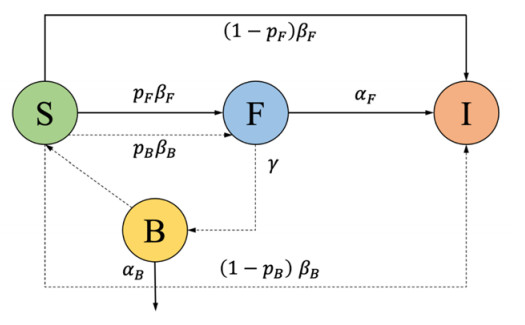
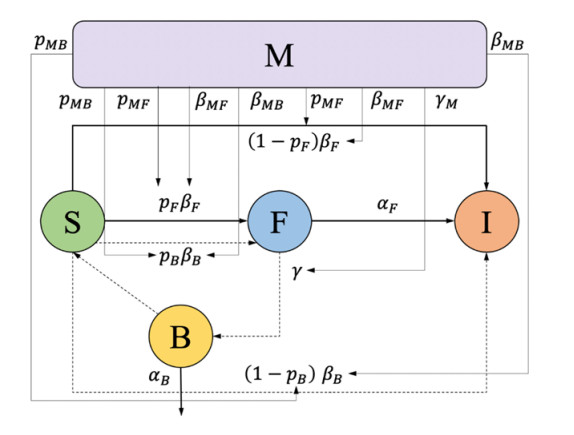
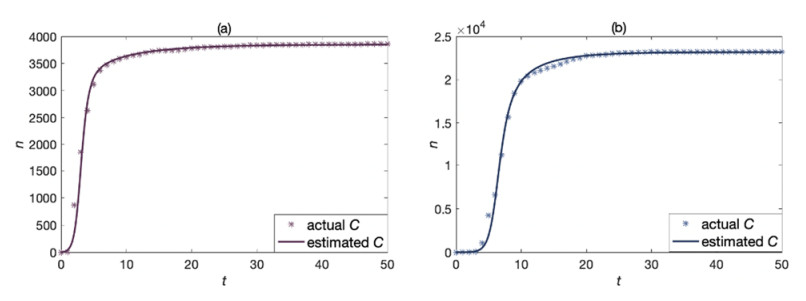

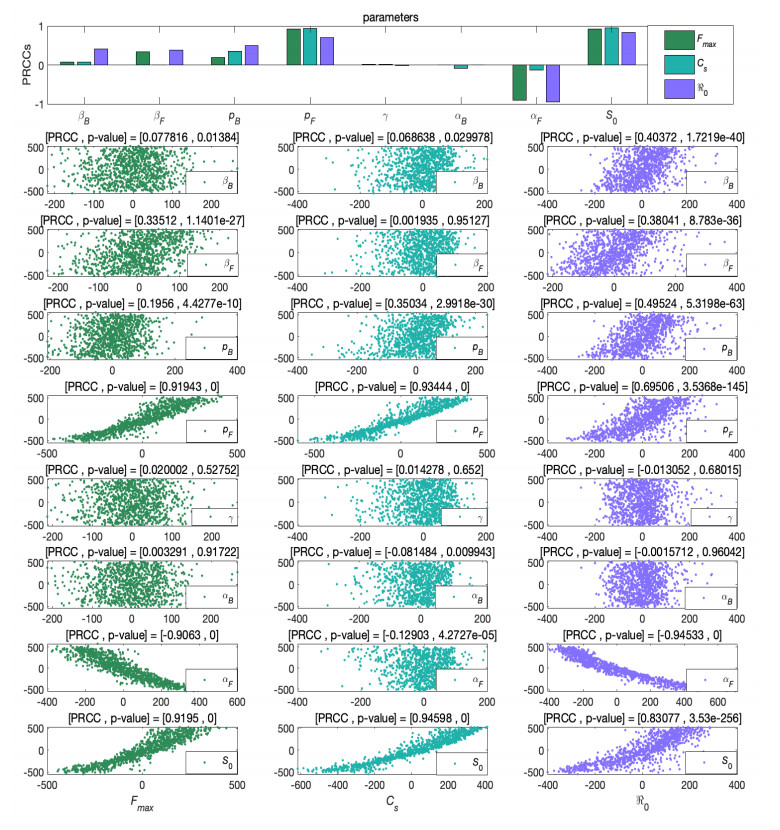

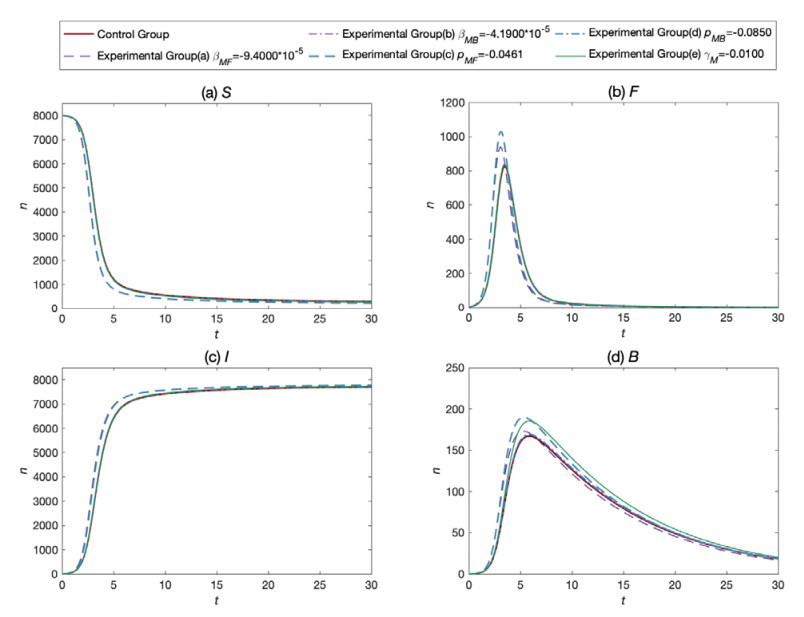



 DownLoad:
DownLoad: